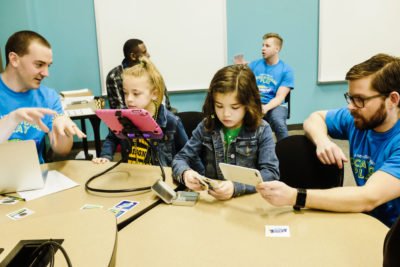In the next several weeks, I will post about the inception of Explore Interactive as an EdTech company and how it has grown over the past two years. In this post, I’ll elaborate upon the initial step in building a successful edtech startup: finding a problem and proposing a solution.
How My Interest in Edtech Started

We found that hands-on activities are much more engaging than videos. Without that info, we would have stayed a video edtech startup… Just goes to show how important customer discovery interviews are!
My entire life, I’ve considered myself a problem solver. I’ve always enjoyed finding problems, researching, collecting information, forming a plan, and implementing the solution to help everyone involved. I stumbled upon edtech entrepreneurship when I experienced a problem in a tough science course.
As a visual learner, I needed more than a textbook to grasp complex concepts such as photosynthesis or the carbon cycle. However, the available videos would never explain the right amount of information; they would either go into too much depth or not enough. Upon speaking with the Indiana Biology Teacher’s Association President, I found this was not only a problem faced by students but by teachers too! Therefore, a team of Purdue University students and I started building and selling AP Biology videos to high schools across the State of Indiana. These videos were designed, crafted, and catered to a typical AP Biology student.
When the Purdue Foundry, an entrepreneurship incubator at Purdue University, heard about our progress, they invited me to

Interviewing potential users has been critical in not only finding the solution but also finding what problem we should actually be solving with edtech
speak with the Entrepreneurial Programs Manager and discuss future prospects for the company. After several follow up conversations, we decided to move towards validating the problem with customer discovery interviews. During the summer of 2015, I had the chance to interview over 200 parents and educators from across the nation.
By the time I hit my 100th interview, I needed to reflect on the direction of the company. At the time I was in beautiful Asheville, North Carolina. I remember driving up to the top of the hill at UNC Asheville and thinking about the company.
Throughout the interviews, I kept hearing three overarching themes:
- Schools have very little funding, with teachers spending their own money on classroom supplies,
- Students start to disengage in their education around 4th grade,
- Excessive state-mandated testing and rigorous evaluations made teachers focus on teaching to the test.
Were our AP Biology videos solving the most pressing needs of parents and educators? Were we making the greatest impact on students? Were we causing students to develop a passion for STEM? Or were we only helping a certain class of students?
Suddenly I saw an opportunity to impact and inspire even more students. If we moved beyond AP Biology videos, we could address the most pressing needs of parents and educators. We could develop a passion for STEM in many more students with a shift in our strategy.
As I gazed off at the rolling countryside, I realized these new problems presented a larger challenge. But how to address all of these problems? Where do I even begin? On my drive back, my mind was racing.
New Requirements derived from Customer Insight
I wanted to create a solution that:
- Increased accessibility of STEM content to all students
- Reduced prep time for teachers
- Engaged students in the content
- Utilized the devices already available in the classroom or home
With some serious thought, I came up with the idea of utilizing augmented reality technology, in a game-like environment, to teach STEM concepts. I would use the funds and connections from my previous edtech startup to solve these new, larger problems and call the new company Explore Interactive.
On the next post, I’ll talk about one of the most difficult aspects of an edtech startup– building a world-class team.
-Wesley Virt, Founder, and COO
This post is apart of our #AnatomyofaStartup Campaign, click here to learn more.

